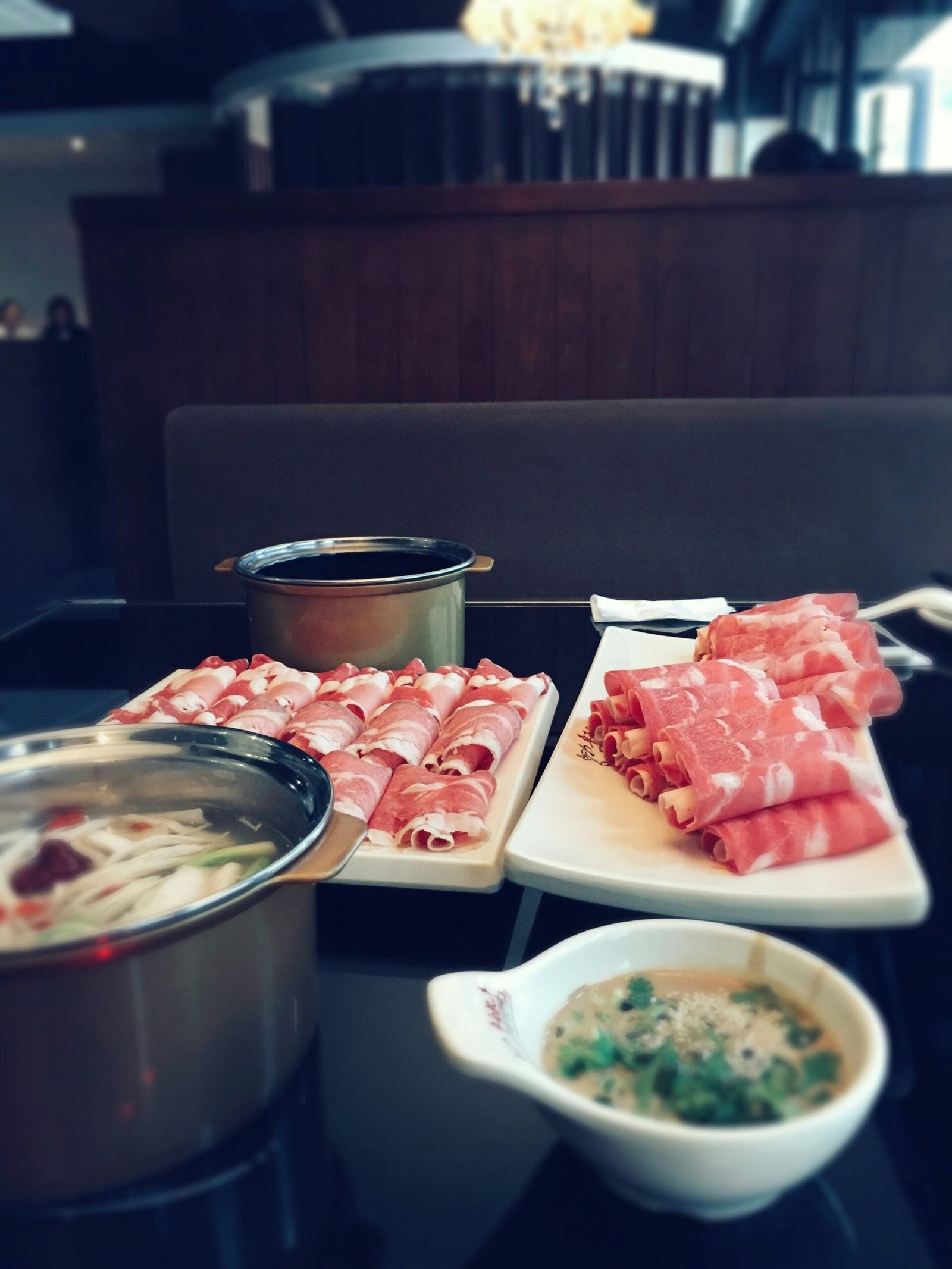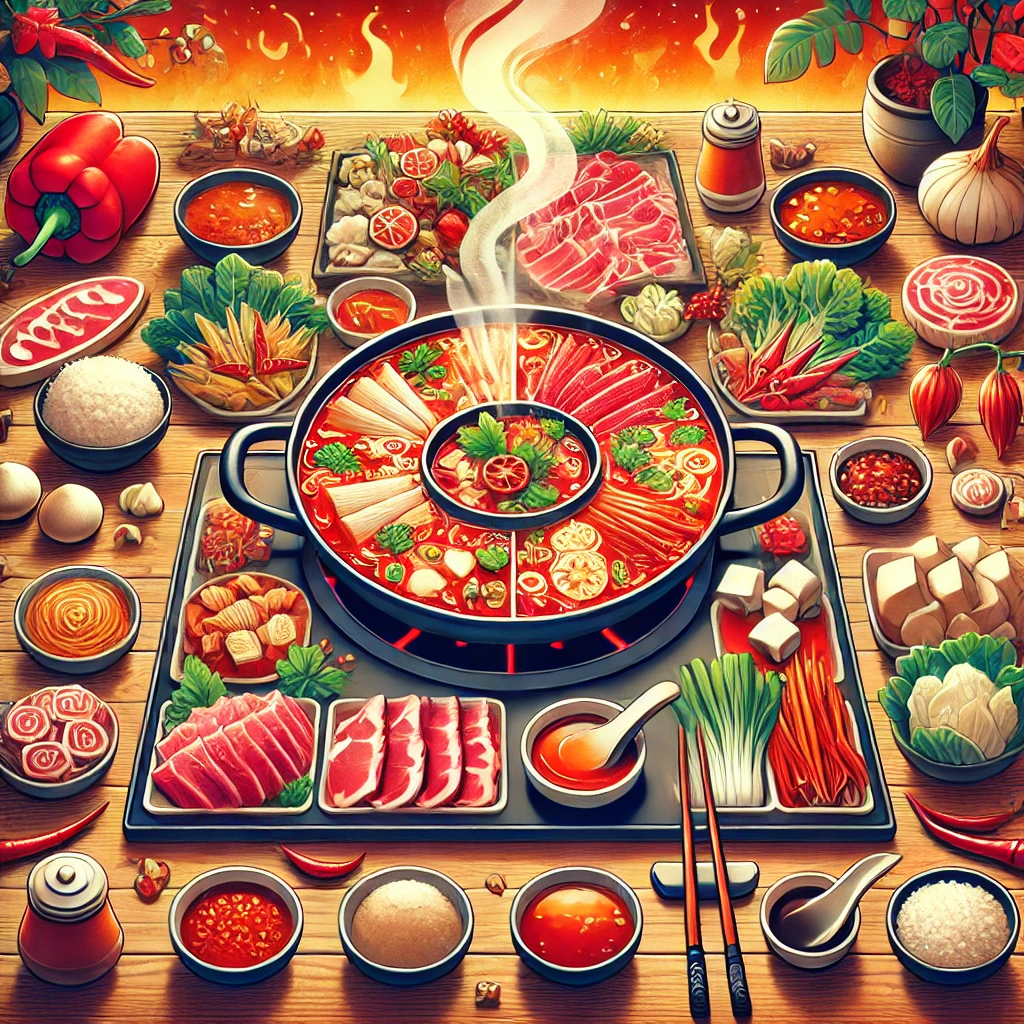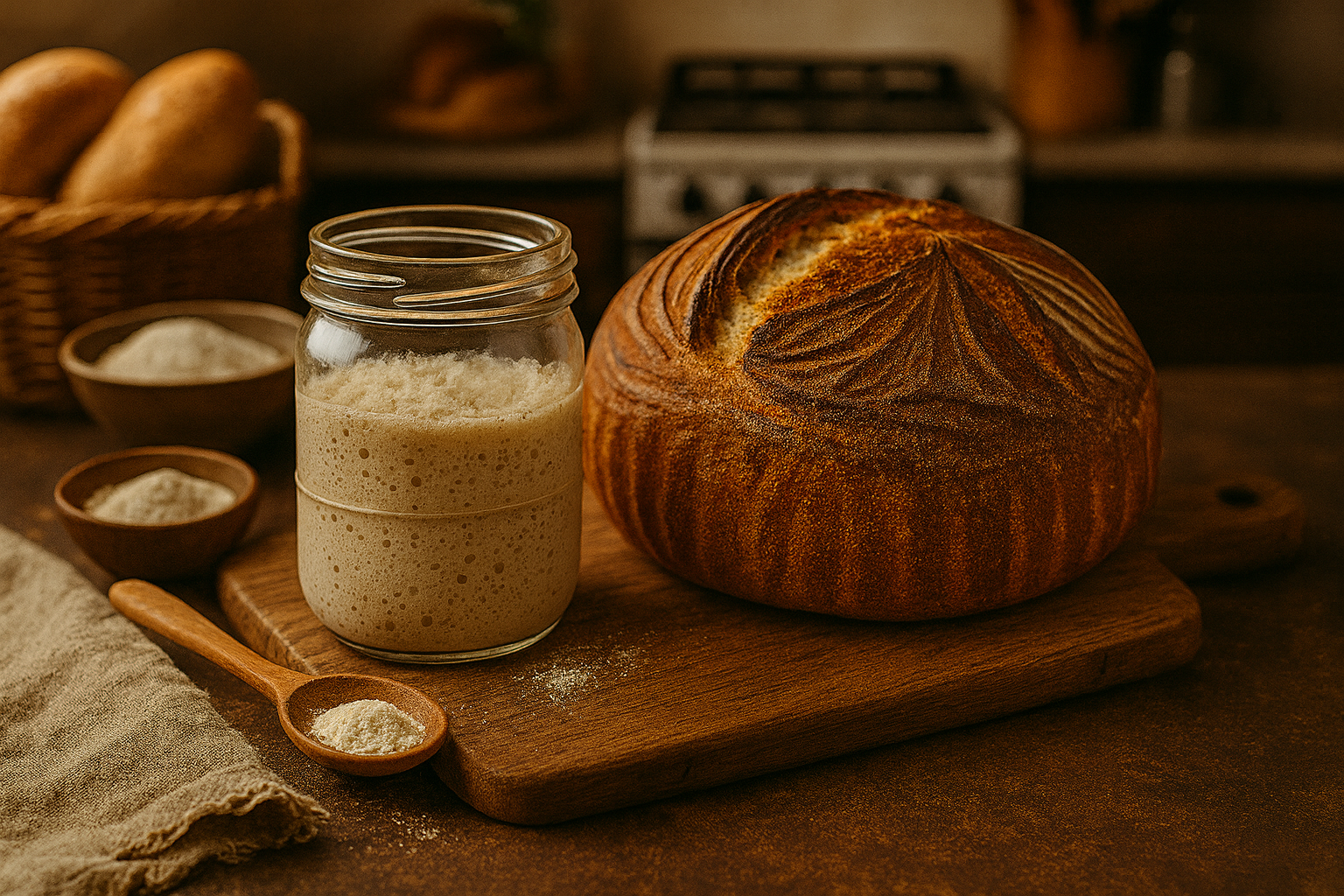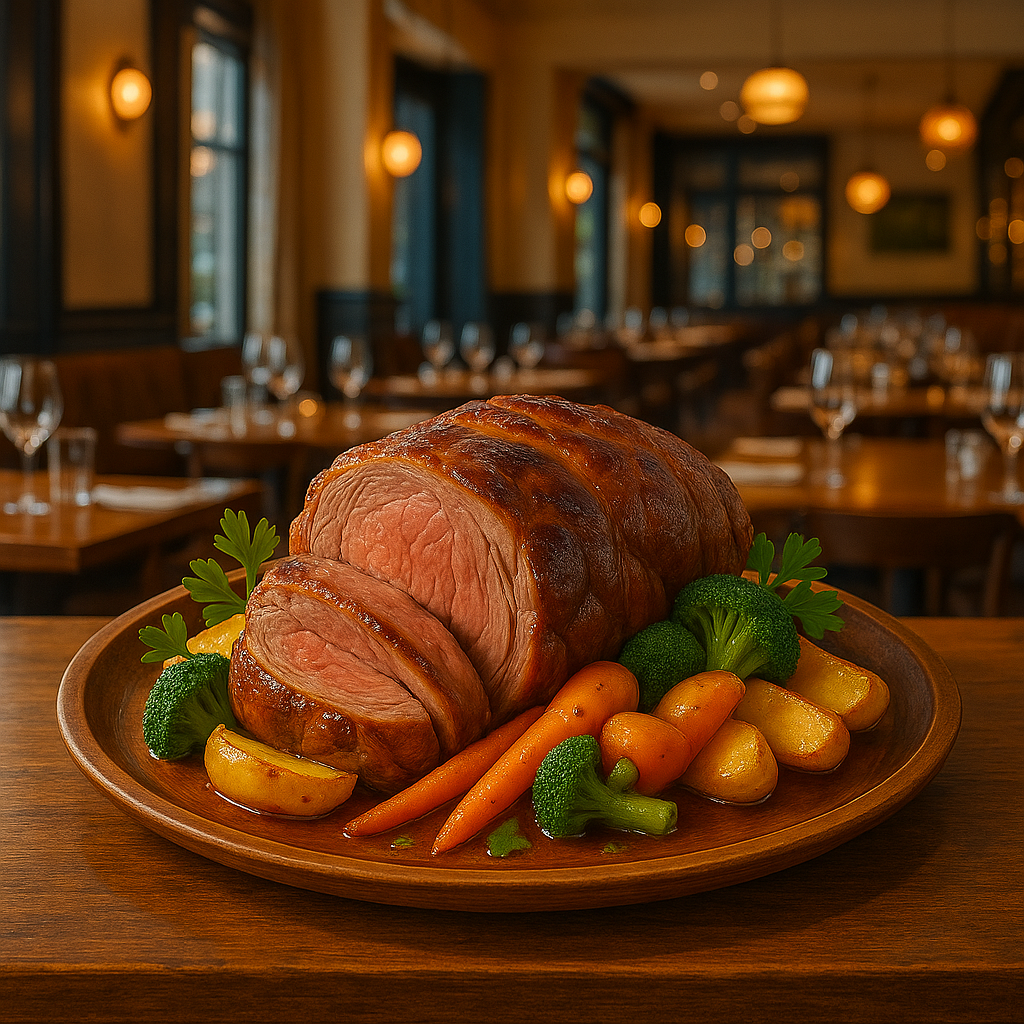Table of Contents

Introduction to Chinese Hot Pot
Chinese hot pot, known as 火锅 (huǒguō), holds a prestigious place in the tapestry of Chinese cuisine, renowned for both its rich history and cultural significance. Originating over a thousand years ago in Mongolia, the dish has evolved to encompass numerous regional styles, each boasting its unique flavors and ingredients. Traditional hot pot consists of a simmering pot of broth placed at the center of the dining table, where diners immerse various raw ingredients, allowing them to cook directly at the table.
The essence of Chinese hot pot lies in its social aspect, serving as a communal dining experience that fosters connections among family and friends. In Chinese culture, sharing a meal is fundamental, and hot pot epitomizes this philosophy. Diners gather around the pot, engaging in lively conversation while selecting their preferred ingredients, which can include a diverse array of vegetables, meats, seafood, and tofu. This collaborative cooking method encourages interaction, making each meal a cherished occasion rather than a mere necessity.
As the centuries passed, hot pot has transcended geographical boundaries, with variations emerging across different regions of China. From the spicy Sichuan hot pot, known for its numbing and fiery flavors, to the milder Cantonese version, which emphasizes fresh ingredients and delicate broths, each style reflects the local tastes and preferences. Additionally, the dish has become increasingly popular outside of China, appealing to food enthusiasts eager to embrace this interactive dining experience.
This enduring tradition not only offers an opportunity to savor an array of flavors but also symbolizes the importance of togetherness in Chinese culture. Through hot pot, people forge bonds over the shared act of cooking and eating, creating lasting memories around the table. Understanding this integral aspect of Chinese hot pot enhances the overall experience, allowing diners to appreciate its depth and significance thoroughly.
Essential Ingredients for Hot Pot
Hot pot is a vibrant and communal dining experience that revolves around a simmering pot of flavorful broth in which a variety of ingredients are cooked. The choice of broth is fundamental to the hot pot experience, with options ranging from spicy, mild, to herbal. Spicy broth, often infused with chili oil and Sichuan pepper, adds a significant kick, while mild broths, such as chicken or vegetable, are designed to offer a more subtle flavor. Herbal broths can provide a nourishing element, often incorporating medicinal herbs that enhance the dish’s overall benefits.
When it comes to proteins, a selection of meats is crucial. Common choices include thinly sliced beef, lamb, and chicken. The beef, often marbled, adds richness to the broth, while lamb is usually favored for its distinct flavor. Chicken provides a lighter option that tenderly soaks up the essence of the broth. Seafood such as shrimp, fish slices, and scallops also play a prevalent role, contributing a fresh and delicate taste profile that complements heartier ingredients.
Vegetables are equally important in a hot pot, adding nutritional value and texture. Favorites include leafy greens like spinach, napa cabbage, and bok choy, as well as mushrooms like shiitake and enoki. Root vegetables such as sweet potatoes and radishes can also be used, enriching the overall flavor as they cook in the broth. Noodles, whether wheat, rice, or glass noodles, serve as a hearty base, soaking up the flavors from the broth and other ingredients.
Preparing these ingredients typically involves slicing meats into thin shavings, washing and chopping vegetables, and portioning out noodles.Strategic combinations enhance the hot pot experience; for instance, pairing spicy broth with tender beef or herbal broth with fresh vegetables can elevate the dish. By understanding the significance of each component, diners can create a harmonious balance that highlights the essence of the hot pot.

Choosing the Right Equipment
When it comes to enjoying the delectable experience of Chinese hot pot, having the right equipment is crucial. Whether you are preparing a meal at home or dining at a restaurant, equipping yourself with the appropriate tools will enhance your hot pot experience. The primary component of this culinary adventure is the hot pot itself. Traditionally, these pots are divided into sections, allowing diners to cook multiple ingredients simultaneously in various broths.
For a home setup, a dedicated hot pot stove should be selected. Electric hot pot stoves are convenient as they allow temperature control and are easy to use. If cooking outdoors or at a gathering, a portable butane gas stove is an excellent choice for its mobility and effectiveness. Make sure to check your pot’s compatibility with the heat source; a heavy-duty pot works well on gas stoves, while a lighter stainless steel pot is suitable for electric options.
In addition to the stove and pot, various utensils are essential for a seamless hot pot experience. Long chopsticks or a set of tongs are helpful for placing ingredients into the pot and retrieving them when cooked. A ladle or slotted spoon can aid in serving the broth and lifted items, while small bowls for sauces and dips are crucial for personalizing each diner’s experience.
Creating a well-equipped hot pot station involves organizing your ingredients and tools within reach. Arrange fresh vegetables, meats, seafood, and noodles in an orderly manner, allowing for easy access during cooking. Additionally, providing personalized dipping sauces can enhance the communal and interactive nature of the meal, making it not just a dish but a delightful experience. In conclusion, investing in the right equipment and thoughtfully setting up your hot pot station is essential for a successful and enjoyable hot pot gathering.
The Broth: Base of the Hot Pot
The broth serves as the essential foundation of a Chinese hot pot, setting the stage for the overall flavor profile of the meal. There are various types of broths to choose from, each offering unique tastes and aromas. Among the most popular options is the spicy Sichuan broth, which combines a rich blend of chili oil, Sichuan peppercorns, garlic, and ginger. This broth can be made by simmering these ingredients in a pot of chicken stock, then adjusting the spice levels according to personal preference. A typical recipe involves heating oil and frying the spices before adding the stock.
On the other end of the spectrum, those who prefer milder flavors may opt for a nourishing chicken stock broth. This can be easily prepared by simmering a whole chicken with aromatics such as onion, garlic, and carrots for several hours, resulting in a rich, savory base perfect for complementing vegetables, seafood, and meats. For a vegetarian or vegan option, a clear vegetable broth made from simmering a medley of vegetables, mushrooms, and herbs can serve as an excellent alternative.
The selection of broth should align with both the diner’s palate and the ingredients that will accompany it. Certain broths pair better with specific ingredients; for instance, a spicy broth may enhance the flavor of fatty meats, while a lighter broth could highlight the freshness of delicate fish and greens. Furthermore, the inclusion of herbs and spices is paramount in enriching the broth’s overall flavor. Common additions include star anise, cinnamon, and scallions. Enhancing your selected broth with desirable flavors not only elevates the meal but also creates an unforgettable hot pot experience.

Etiquette and Social Aspects of Hot Pot
Chinese hot pot is not just a meal; it is an experience that emphasizes communal dining, social interaction, and shared enjoyment. Understanding the etiquette associated with hot pot is essential for both newcomers and those wishing to deepen their appreciation of this culinary tradition. One of the key aspects of hot pot etiquette is the importance of sharing food. Diners typically order a variety of ingredients, which are placed in the center of the table, allowing everyone to pick and choose what they want to cook. It is customary to help others fill their bowls and to share your own selections, creating a warm and inclusive atmosphere.
Using chopsticks correctly is another vital aspect of hot pot dining. Diners should use a separate pair of chopsticks for grabbing raw ingredients to avoid cross-contamination with cooked food. It is also polite to refrain from using personal chopsticks to take food from shared plates. Instead, a serving utensil should be utilized, or one can use the designated communal chopsticks. This practice promotes hygiene and shows consideration for fellow diners.
Portion sizes are an additional facet of hot pot etiquette. Unlike other dining customs where one may take larger portions, it is encouraged to begin with smaller amounts. This not only prevents waste but also allows guests to sample various dishes throughout the meal. Additionally, as the broth is shared, it is respectful to be mindful of one’s cooking time, ensuring that others can enjoy their selections without prolonged waits.
In conclusion, embracing the social aspects and etiquette of hot pot dining enhances the overall experience, allowing diners to enjoy not only the food but also the company. By being considerate and following these guidelines, one can navigate the lively atmosphere of a hot pot gathering with confidence and grace.
Dipping Sauces: Enhancing Flavors
Dipping sauces play a crucial role in enhancing the overall experience of enjoying Chinese hot pot. These sauces not only complement the fresh ingredients cooked in the bubbling pot but also contribute additional layers of flavor that can elevate a meal from ordinary to extraordinary. The most iconic dipping sauces include sesame sauce, soy sauce, and chili oil. Each of these sauces brings its unique taste and can be customized to suit individual preferences.
Sesame sauce, rich and nutty, is a classic choice for many hot pot enthusiasts. Made from ground sesame seeds, this sauce can be enhanced with garlic, vinegar, or a hint of sugar to balance its richness. On the other hand, soy sauce serves as a versatile base that adds a savory depth to various dishes. By mixing soy sauce with additional ingredients such as scallions, minced ginger, or chilies, diners can create a personalized dipping experience that complements the delicate flavors of meats and vegetables.
Chili oil, known for adding a spicy kick, is another essential component of hot pot dipping sauces. It can be used as is, or blended with other sauces for the perfect heat level. Add herbs like cilantro or mint for a refreshing contrast, and you may find that the heat is well-balanced and even more enjoyable. The beauty of these sauces lies in their adaptability; with just a few simple ingredients, one can mix and match flavors to create a unique sauce that resonates with their palate.
Ultimately, the goal is to find a balance of flavors that work together, enhancing the freshness of the hot pot ingredients. It is encouraged to experiment with various combinations to discover the perfect dipping sauce that suits individual tastes, making each hot pot experience distinct and memorable.
Cooking Techniques and Timing
Cooking techniques in Chinese hot pot are pivotal to achieving the desired flavors and textures of various ingredients. The fundamental method involves simmering fresh ingredients in a flavorful broth that is heated at the table. This interactive cooking style allows diners to enjoy a communal dining experience while customizing their meals to their liking. Each ingredient has its own optimal cooking time, which is essential for both safety and taste.
When it comes to meats such as beef, lamb, or chicken, slices should be thin, usually around 1/8 inch thick. This allows for quick cooking, typically requiring only 30 seconds to 2 minutes in the simmering pot. It is important to ensure that the meat is fully cooked to reduce any risk of contamination. On the other hand, seafood may require a slightly longer cooking time, depending on the type and thickness. For example, shrimp can be cooked in just 2–3 minutes, while fish fillets may take 3–5 minutes to reach a tender, flaky texture.
Vegetables are also an integral part of the hot pot experience. Leafy greens, such as bok choy and spinach, only need a brief 30 seconds to 1 minute of cooking. Root vegetables, such as carrots or potatoes, require a longer cooking time, generally between 3 to 5 minutes, to become tender yet retain their vibrant color. Noodles should be added last, as they usually only need about 2 to 4 minutes to cook, depending on the type.
Another important aspect of cooking in hot pot is to avoid overcrowding the pot. Adding too many ingredients at once can lower the broth temperature, leading to uneven cooking and potentially tough textures. It is advisable to cook in small batches, allowing sufficient space for the ingredients to cook properly. By managing cooking times effectively and adhering to these techniques, diners can enhance their Chinese hot pot experience.
Common Mistakes to Avoid
Embarking on the journey of enjoying Chinese hot pot can be an exciting culinary adventure, but there are several common mistakes that beginners often encounter. These pitfalls can detract from the overall experience, making it essential to be aware of them before diving in.
One of the most frequent errors is overcooking the ingredients. Each component of your hot pot, such as thinly sliced meats, vegetables, and noodles, requires a specific amount of time to cook. Beginners might find themselves distracted by conversation or the ambiance, leading to overdone ingredients that lose their texture and flavor. Generally, meats need only a minute or two, while vegetables might take a little longer. It is essential to keep an eye on cooking times to retain the freshness and quality of the items you choose.
Another common oversight is improper broth selection. The broth serves as the heart of the hot pot experience, and selecting one that does not align with your taste preferences can lead to disappointment. Familiarizing yourself with the various broth options—such as spicy, mild, and herbal—before attending your first hot pot meal can greatly enhance your enjoyment. Do not hesitate to ask your server for recommendations based on the style of cooking you prefer.
Etiquette is equally important when it comes to hot pot dining. Many first-timers may not be aware of certain conventions, such as using separate utensils for raw and cooked ingredients. This practice not only maintains hygiene but also ensures that everyone enjoys a safe and pleasant dining experience. Moreover, forgetting essential accessories or tools, such as dipping sauce dishes or hot pots, can hinder the enjoyment of your meal. Being prepared with the right items will allow for a smoother, more fulfilling hot pot experience.
Ultimately, by avoiding these common mistakes, you will be well on your way to mastering the art of hot pot and fully enjoying this unique culinary tradition.
Conclusion: Bringing It All Together
In this exploration of Chinese hot pot, we have uncovered the essential ingredients, etiquette, and techniques that transform an ordinary meal into a vibrant dining experience. Selecting the right ingredients is pivotal for crafting a memorable hot pot feast. From a variety of meats to an array of vegetables and noodles, the choices available not only cater to diverse palates but also allow for personal customization. Understanding how to balance flavors and textures is key, as each component contributes to the overall enjoyment of the meal.
Equally important is the etiquette surrounding hot pot dining. The practice of sharing food with friends and family is a cornerstone of this cuisine, promoting a sense of community and connection. Adhering to certain customs, such as waiting for the broth to achieve the perfect simmer before cooking, can enhance the experience for all participants. Moreover, incorporating shared dipping sauces and condiments fosters a collaborative atmosphere, making each interaction during the meal more enriching.

As you consider hosting your own hot pot gathering, remember that the essence of this culinary tradition lies in the collective enjoyment it brings. Set the stage for an interactive dining experience by arranging a selection of fresh ingredients and a bubbling pot of broth at the center of your table. Encourage your guests to participate in the cooking, creating an engaging and delightful environment. Sharing stories and laughter while savoring each bite can elevate the hot pot experience to new heights, turning it into a cherished memory.
Ultimately, embracing the art of Chinese hot pot not only enriches your culinary repertoire but also strengthens bonds with those you share it with, making each meal a treasured occasion.






I am extremely impressed along with your writing abilities as smartly as with the format for your weblog. Is that this a paid theme or did you modify it your self? Either way keep up the nice high quality writing, it is uncommon to look a great blog like this one these days!
Asking questions are actually pleasant thing if you are not understanding anything entirely,
but this paragraph provides good understanding even.